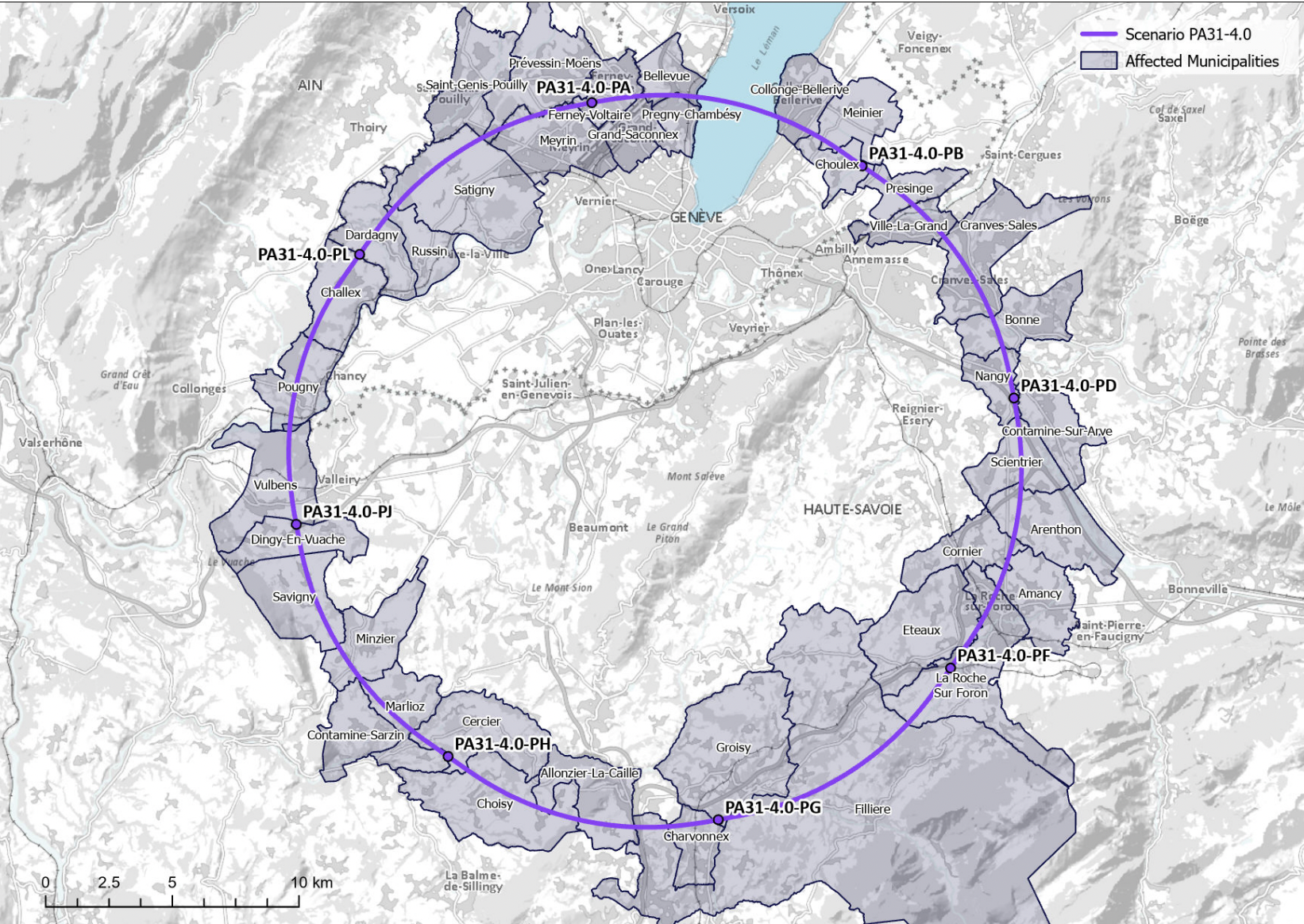From Vision to Reality: FCC Feasibility Study completes Midterm Review

The seeds of the Future Circular Collider (FCC) were sown a decade ago at a pivotal meeting of physicists at the University of Geneva in 2013. This gathering responded to a call from the European Strategy for Particle Physics, which highlighted the need for a next-generation collider capable of pushing the boundaries of energy exploration. The FCC study thus embarked on a journey to explore the feasibility of building a collider within a new, vast tunnel stretching 80-100 kilometers in circumference.
The year 2018 marked a significant milestone with the completion of a comprehensive Conceptual Design Report (CDR). This document meticulously outlined the FCC's physics potential, detector concepts, accelerator design, and infrastructure requirements. However, the road to realization wasn't without its detours. Two years of careful evaluations followed, culminating in the 2020 update of the European Strategy. This update emphasized the need for further investigation into the technical and financial feasibility of a future hadron collider at CERN with an impressive center-of-mass energy exceeding 100 TeV. Additionally, the strategy recognized the potential of an e+e- Higgs and electroweak factory as a possible first stage for the project.
Fueled by this renewed endorsement, CERN officially launched the five-year FCC feasibility study in 2021. This ongoing study represents a critical step in bringing the FCC from a visionary concept to a tangible reality. The FCC feasibility study recently reached a critical milestone with the conclusion of its midterm review process. The CERN Council finalized its assessment on February 2nd, 2024, acknowledging the remarkable progress made by the FCC study team thus far.
The review encompassed various study areas, including the placement of the collider ring, civil engineering, technical infrastructure, accelerator physics, detector concepts, cost estimations, and funding aspects. It highlighted significant advancements across all fronts, underscoring the dedication and expertise of the FCC project team.

Municipalities that are directly or indirectly affected by the reference implementation scenario of the FCC in France and in Switzerland.
This successful midterm review marks a pivotal moment for the FCC project, affirming its feasibility and laying a solid foundation for future development.
The discovery of the Higgs boson at the Large Hadron Collider (LHC) represented a significant achievement, confirming predictions within the Standard Model. However, it also brought to light the model's limitations, leaving fundamental questions unanswered.
Theoretical frameworks beyond the Standard Model explore a vast array of possibilities, proposing the existence of additional particles and interactions. To explore this complex landscape, a powerful tool is needed, capable of unprecedented precision and energy reach.
The FCC project aims to address these challenges through a two-stage approach:
FCC-ee: Unveiling the Secrets of the Standard Model
The FCC-ee, a proposed multi-energy lepton collider, takes inspiration from the remarkable success of its predecessor, LEP. LEP played a pivotal role in solidifying the Standard Model and paved the way for groundbreaking discoveries like the top quark and the Higgs boson. The FCC-ee aims to build upon this legacy by operating in the mid-2040s for roughly 16 years. During this time, it will produce unprecedented quantities of Z, W, and Higgs bosons, culminating in the production of top-quark pairs.
A key outcome of the FCC midterm review is a new, optimized ring layout for the FCC-ee. This layout features a four-fold periodicity, allowing for either two or four interaction points. This design advancement further boosts the luminosity (collision rate) of the FCC-ee, enhancing its ability to gather crucial data.
FCC-hh: A Stepping Stone to Higher Frontiers
The successful mid-term review not only confirmed the maturity of the FCC-ee design but also highlighted its potential as a springboard for a future, even higher-energy collider – the FCC-hh. The FCC-ee will provide significant infrastructure and crucial knowledge about lower-energy physics, laying the groundwork for the FCC-hh.
Following revised placement studies for the FCC-ee, the overall layout of the FCC-hh has undergone significant changes since the Conceptual Design Report (CDR). These changes offer three key benefits:
- More Optimal Experiment Caverns: The size of the experiment caverns has been optimized, allowing for the potential sharing of detector components between the FCC-ee and FCC-hh.
- Reduced Surface Sites: The number of surface sites required for the project has been reduced from 12 to 8, streamlining construction and logistical considerations.
- Shorter Transfer Lines: The tunnel connecting the injector to the collider ring has been shortened, improving efficiency.
These advancements demonstrate the ongoing progress and optimization of the FCC project, paving the way for a future filled with groundbreaking discoveries in particle physics.
Both the e+e- and pp colliders hold immense individual merit. However, their true power lies in their synergy. Operating together, they offer the most extensive physics reach of any proposed future collider.
In summary, the successful midterm review of the FCC project represents a significant milestone, demonstrating its viability and setting the stage for further exploration into the mysteries beyond the Standard Model. Through its commitment to precision and energy reach, the FCC project aspires to revolutionize our understanding of particle physics and our place in the cosmos.
